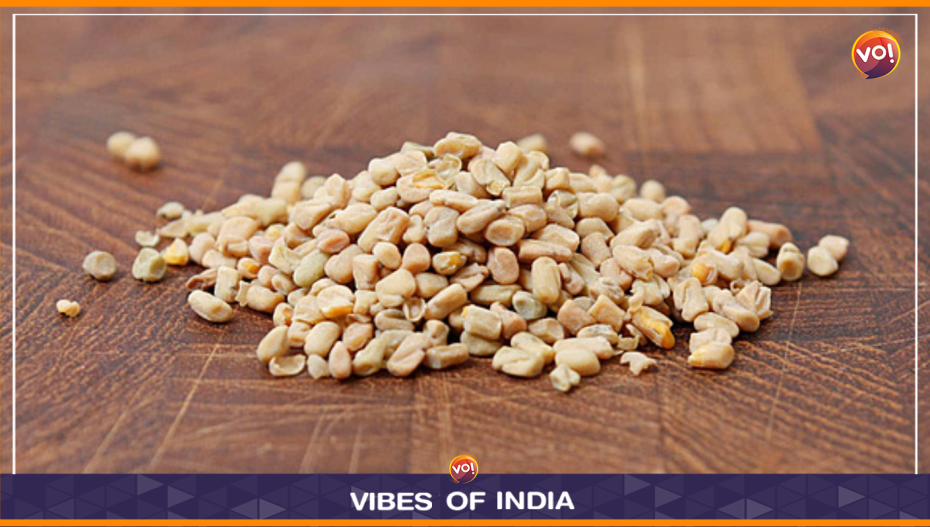In recent times, the issue of abdominal fat has gained significant attention. Sedentary lifestyles have led to fat accumulation in various parts of the body, with particular concern surrounding belly fat, also known as visceral fat. This type of fat surrounds internal organs, impacting their function and increasing the risk of chronic diseases. Shedding belly fat is notoriously challenging, emphasising the importance of effective strategies.
Fenugreek seeds, commonly known as methi, offer a potential solution for reducing belly fat. With a history spanning 6,000 years and use in Indian, Greek, Egyptian and Roman cultures for medicinal purposes, fenugreek seeds have demonstrated their effectiveness in tackling fat-related concerns.
Fenugreek, a fragrant and flavourful herb frequently found in Indian cuisine, adds distinct tastes to various dishes, from parathas to curries. It is also transformed into a spice called kasuri methi when dried. Beyond culinary uses, fenugreek seeds were historically administered to nursing mothers to boost milk production and employed in the treatment of various ailments, such as fever, vomiting, diabetes and constipation. Additionally, fenugreek seeds found their way into beauty regimens, serving as hair and face packs in ancient times.
As per media reports, Smita Khanna Roy Chowdhury, a Lifestyle coach at Golfe View Healthcare & Research Institute, highlights the diverse applications of fenugreek seeds. She notes that these seeds are used in spice blends and as flavoring agents in food, beverages and tobacco. Fenugreek, scientifically known as Trigonella foenum-graecum, goes by various regional names like methya, menthya, vendhayam and menthulu. It imparts the nostalgic aroma of dishes like saag, parathas, malai methi curries, and more. Additionally, fenugreek seeds play essential roles in panch-phoron, curry powder, sambar, and tadkas, contributing not only flavor but also health benefits.
Fenugreek seeds are characterized by their brownish-yellow color and unique odor. These nutritious microgreens are cultivated during the cooler months, from autumn to spring, in both the Rabi and Kharif cropping seasons in South India.
Khanna Roy Chowdhury provides a breakdown of the nutritional composition of fenugreek seeds, revealing that they contain moisture (13.7%), protein (26.2%), fat (5.8%), minerals (3%), fiber (7.2%) and carbohydrates (44.1%) per 100 grams. They are also rich in calcium, phosphorus, carotene, thiamine, riboflavin, niacin, alkaloids, trigonelline, choline, essential oils and saponification compounds.
The historical use of fenugreek seeds is not limited to India; it extends to ancient Egyptian, Greek, and Roman civilizations. Egyptians employed them for treating burns and mummification, Greeks used them to combat infections and Romans considered them remedies for fevers and various respiratory and intestinal issues.
Khanna Roy Chowdhury underscores the enduring presence of fenugreek seeds in Indian cuisine, dating back to 3,000 years ago. They were not only culinary condiments but also essential components of cattle feeds. Fenugreek seeds were utilized in gruels and halwa, benefiting nursing mothers by enhancing milk production and serving as remedies for fever, vomiting, poor appetite, and constipation. Their application in beauty care as hair and face packs further highlights their versatility.
Khanna Roy Chowdhury emphasizes that fenugreek seeds have proven effective in promoting lactation in nursing mothers, reducing belly fat, alleviating fever, and treating flatulence. These seeds offer soothing effects on the skin and mucous membranes, reducing irritation and swelling. Additionally, they stimulate urine secretion and discharge, relieve flatulence, and are advantageous for diabetics due to their high fiber and antioxidant content. Fenugreek seeds also aid in dandruff removal and contribute to abdominal fat reduction. Galactomannan, a water-soluble compound in fenugreek seeds, effectively suppresses appetite, reduces bloating, and acts as a laxative.
To incorporate fenugreek seeds into one’s diet for abdominal fat reduction, Khanna Roy Chowdhury recommends soaking 1 to 2 teaspoons of washed fenugreek seeds overnight and consuming them in the morning. Alternatively, boiling 1 teaspoon of fenugreek seeds in 250 ml of water can produce a beneficial tea.
However, it is crucial to exercise moderation when using fenugreek seeds, as excessive consumption can lead to a drop in blood sugar levels and potential allergic reactions, including diarrhea, nausea, dizziness and headaches.
Moreover, pregnant women should avoid fenugreek seeds due to their oxytocin content, which can influence uterine contractions and potentially lead to abortions. Individuals with diabetes should exercise caution, as fenugreek may interact with medications used to manage blood sugar levels. Skin rashes may also occur with the application of fenugreek seeds in herb form, and excessive consumption can lead to diarrhea. Therefore, moderation remains the key to safe and effective use of fenugreek seeds for various health benefits.
Also Read: Haldi To Sangeet: Parineeti And Raghav’s Joyful Pre-Wedding Celebrations












